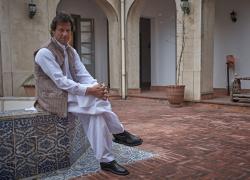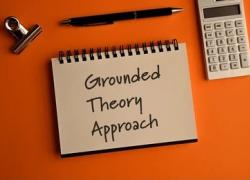How to choose the Perfect Theoretical Framework for a Historical research Study?
Historical research often relies on various theoretical frameworks to guide the inquiry and interpret historical phenomena. The choice of a theoretical framework depends on the nature of the research question and the specific historical context.
In constructing a nuanced and resonating approach to historical research, various theoretical frameworks offer profound lenses through which to interpret the intricacies of the past. Here are some eminent theories used in historical research as theoretical frameworks:
1. Marxist Theory:
- Rooted in the work of Karl Marx (1818–1883) and Friedrich Engels (1820–1895), the theory focuses on the role of economic structures and class struggles in shaping historical events.
- This theory illuminates the historical landscape through the dialectical interplay of economic structures, class struggle, and the deterministic forces shaping societies.
- It analyzes how power relations and economic factors influence historical developments.
- The key concepts of the theory, unveil the intricate interplay of historical materialism, revealing how the mode of production shapes the trajectory of civilizations.
- This lens invites researchers to dissect the tapestry of history through the prism of class struggle, recognizing the transformative power embedded in economic relationships.
- This theory focuses on how money, work, and who owns things shape the way societies develop.
- It looks closely at the struggles between different social classes, like rich and poor, and how these struggles drive historical changes.
- Marxists believe that understanding these economic factors helps unravel the story of how societies grow and change over time.
- This theory, with its emphasis on economic structures, class struggle, and historical materialism, is used as a theoretical framework in various fields such as Sociology, Economics, History, Political Science, Cultural Studies, Education and International Relations.
- Scholars often combine elements of Marxist analysis with other theoretical frameworks to provide a more comprehensive understanding of complex social phenomena.
2. Feminist Theory:
- Associated with the theorist Simone de Beauvoir (1908–1986), Judith Butler (1956), and bell hooks (1952), Feminist Theory examines historical events through the lens of gender and challenges traditional gender roles.
- Feminist theory, championed by visionaries such as Simone de Beauvoir and Judith Butler, introduces a transformative narrative that dissects the historical tapestry by scrutinizing entrenched gender roles, patriarchal structures, and the dynamic intersections of identity.
- The theory explores the experiences of women and the impact of gender dynamics on historical processes.
- It examines historical events through the lens of gender, highlighting the experiences of women, and analyzing how gender dynamics intersect with other social categories in shaping historical narratives.
- The theory is a versatile and interdisciplinary framework that has found application in various fields, shedding light on gender dynamics, power structures, and the experiences of marginalized groups such as Gender Studies/Women’s Studies, Sociology, Psychology, Political Science, History, Healthcare and Nursing care
- The theory is continually evolving and adapting to new challenges and questions across a wide range of academic and professional disciplines.
- Its interdisciplinary nature allows it to contribute valuable insights into the complex interactions between gender, power, and society.
3. Postcolonial Theory:
- Rooted in the work of Edward Said (1935–2003) and Homi K. Bhabha (b. 1949), the theory explores the legacy of colonialism and its impact on the colonized societies.
- Postcolonial theory, as articulated by Edward Said and Homi K. Bhabha, unveils the intricate aftermath of colonial legacies, probing into issues of cultural imperialism and the resilient spirit of resistance embedded in postcolonial histories.
- Examines power dynamics, cultural imperialism, and resistance in historical contexts.
- Investigating the effects of colonial rule on colonized societies, exploring the dynamics of power, and understanding how resistance movements contribute to shaping postcolonial histories.
- At its core, this theory delves into the lasting effects of colonization, dissecting how power, identity, and cultural representations are woven together in the aftermath of imperial domination.
- Emphasizing the agency of formerly colonized peoples, Postcolonial Theory challenges Eurocentric narratives, deconstructs binaries of self and other, and celebrates the vibrant complexities of hybrid identities.
- It invites scholars to explore the nuances of resistance, the negotiation of cultural spaces, and the continual
4. Narrative Theory:
- Postulated by Hayden White (1928–2018) and Paul Ricœur (1913–2005), the theory explores the construction of historical narratives and the role of storytelling.
- The Narrative Theory is the tool that helps historians understand and tell those stories.
- It’s like being a storyteller who looks at the way different tales are put together.
- The theory in historical research focuses on how stories about the past are shaped and told. It explores the characters, plots, and twists in historical events, not just the facts.
- This approach recognizes that the way we tell stories influences our understanding of history. It’s not just about what happened, but how we frame and interpret those events through storytelling. So, Narrative Theory helps historians dig into the narratives, uncovering the layers of meaning woven into the tales of the past.
- The theory analyzes how different narratives shape our understanding of the past.
- It considers the construction of historical narratives, understanding how stories shape our perception of the past, and exploring the role of narrative in historical sense-making.
- The theory, with its focus on the structure and interpretation of stories, is applied across various disciplines as a valuable theoretical framework to understand how narratives shape our understanding of the world such as Literary Studies, History, Communication Studies, Education, Political Science, Healthcare and Nursing.
5. Critical Race Theory:
- Associated with the work of Derrick Bell (1930–2011) and Kimberlé Crenshaw (1959), the theory in historical research is like using a special lens to look at the past.
- This theory helps us see the pieces that might be missing or overlooked.
- It focuses on how race and racism are woven into the fabric of history, showing that it’s not just about events but also about how race shapes people’s experiences.
- It prompts historians to ask questions like, “How did racism influence laws and policies?” or “What impact did it have on different groups of people?”
- It’s like a tool that helps uncover hidden stories and understand how race has played a role in shaping the narratives of the past. The theory focuses on the intersection of race, power, and historical processes.
- It examines how race has been constructed and how it influences historical events.
- It scrutinizes the intersection of race, power, and historical processes, exploring how racial categories have been constructed, and analyzing the impact of systemic racism on historical events.
- The theory as a theoretical framework originated in legal studies but has since expanded its influence across various disciplines History, Education, Social Sciences, Sociology, and Political Science as it explores how racial dynamics intersect with political power and influence. These fields demonstrate the interdisciplinary nature of the theory, highlighting its relevance in analyzing the historical and contemporary impact of race and racism across various academic disciplines.
6. Globalization Theory:
- Rooted in the work of Arjun Appadurai (1949) and Anthony Giddens (1938), the Globalization theory analyzes the interconnectedness of societies and the global forces shaping historical developments.
- The theory explores the impact of globalization on local and global historical processes.
- The theory investigates the influence of global forces on local historical processes, exploring the interconnectedness of societies, and analyzing the impact of globalization on cultural, economic, and political developments.
- It is like understanding how our world is becoming one big neighborhood. It’s the idea that everything and everyone is getting connected more closely, like friends sharing ideas and things.
- Globalization means we can trade goods, share information, and learn from each other, no matter where we are. It’s not just about countries; it’s like everyone is part of a big conversation. The key concept of the theory is that this interconnectedness affects economies, cultures, and societies.
- So, this theory helps us see how these connections shape our lives, how what happens in one place can impact others, and how we’re all part of a global community.
- Globalization Theory serves as a valuable theoretical framework across various fields, offering insights into the interconnected nature of societies such as Economics, Political Science, Cultural Studies, Sociology and Environmental Studies:
- These fields demonstrate the versatility of Globalization Theory as a framework for understanding the multifaceted impact of interconnectedness on economic, political, cultural, social, and environmental aspects of our world.
These are but a few cases of historical inquiry, where each theory, whether it be structuralism and post-structuralism, narrative theory, critical race theory, or globalization theory, contributes its own rich hues and contours to the multidimensional understanding of the past.
Conclusion:
It’s important to note that researchers often combine elements from multiple theoretical frameworks to provide a deeper understanding of historical events. The choice of a theoretical framework should align with the research question and the specific goals of the historical study, creating a nuanced and multifaceted approach to understanding the complexities of historical events. The following references provide comprehensive insights into the key concepts of each theoretical framework in historical research, allowing researchers to explore the foundational works that have shaped these perspectives. Researchers often adapt and combine these theories to suit their specific historical inquiries.
References:
- Appadurai, A. (1996). “Modernity at Large: Cultural Dimensions of Globalization.” Minneapolis: University of Minnesota Press. Giddens, A. (1990). “The Consequences of Modernity.” Stanford: Stanford University Press.
- Beauvoir, S. de. (1949). “The Second Sex.” New York: Knopf. Butler, J. (1990). “Gender Trouble: Feminism and the Subversion of Identity.” New York: Routledge. hooks, b. (1981). “Ain’t I a Woman: Black Women and Feminism.” Boston: South End Press.
- Bell, D. (1987). “And We Are Not Saved: The Elusive Quest for Racial Justice.” New York: Basic Books.
- Butler, J. (1990). “Gender Trouble: Feminism and the Subversion of Identity.” New York: Routledge.
- Crenshaw, K. (1991). “Mapping the Margins: Intersectionality, Identity Politics, and Violence against Women of Color.” Stanford Law Review, 43(6), 1241–1299.
- Derrick Bell (1930–2011) and Kimberlé Crenshaw (b. 1959).
- Lévi-Strauss, C. (1963). “Structural Anthropology.” New York: Basic Books.
- Derrida, J. (1976). “Of Grammatology.” Baltimore: Johns Hopkins University Press
- Crenshaw, K. (1991). “Mapping the Margins: Intersectionality, Identity Politics, and Violence against Women of Color.” Stanford Law Review, 43(6), 1241–1299.
- Marx, K., & Engels, F. (1848). “The Communist Manifesto.” London: Penguin Books.
- Ricœur, P. (1984). “Time and Narrative.” Chicago: University of Chicago Press.
- Said, E. (1978). “Orientalism.” New York: Pantheon Books.
- White, H. (1980). “The Content of the Form: Narrative Discourse and Historical Representation.” Baltimore: Johns Hopkins University Press.


















